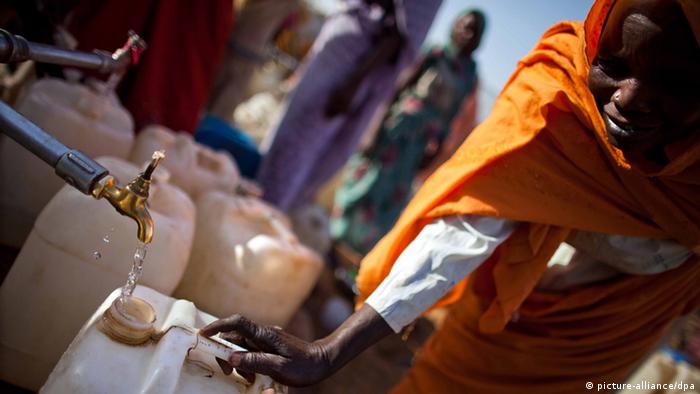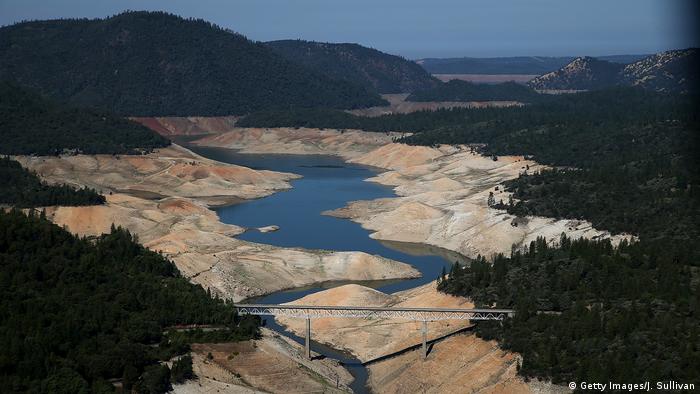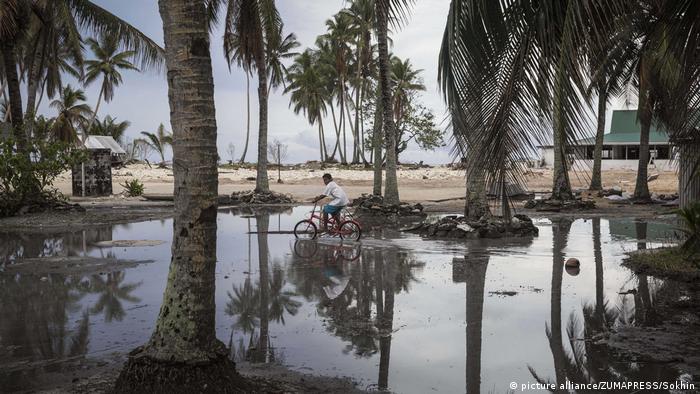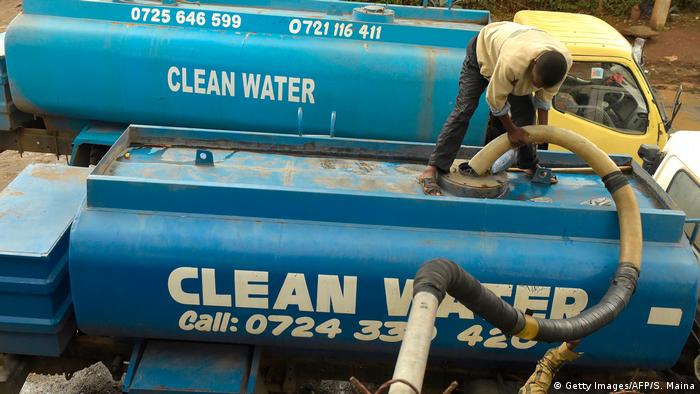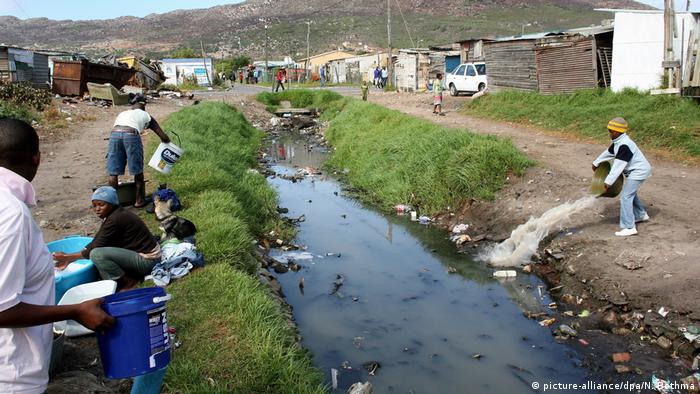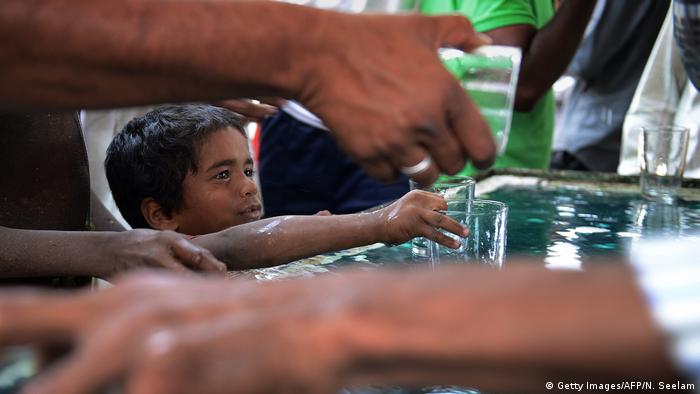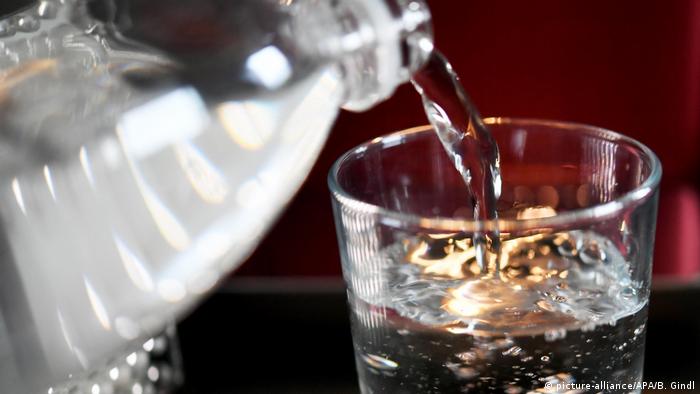Tap water in India is often not safe to drink. Many have, therefore, to water in bottles. Yet, millions of Indians can’t afford to do that. Social entrepreneurs offer an unusual solution.
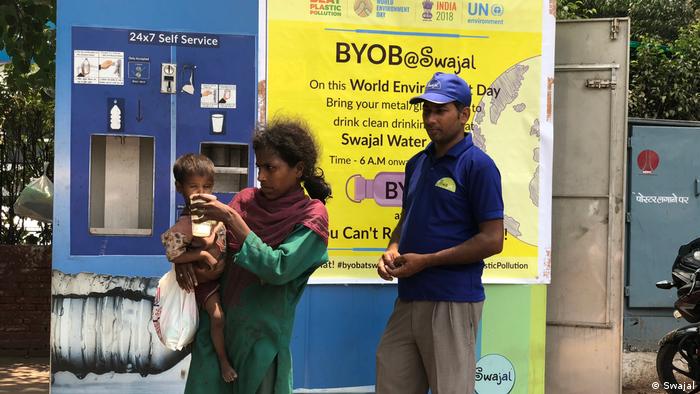
In search of a better life she came out West, the people living now on the edge of the Bhalswa waste dump in Delhi, Bengal, in the capital. Their makeshift brick houses push back against the towering mountains of waste.
Every day you climb the mountain of waste, such as the 30-Meter-high garbage dump is called to collect waste, you can sell. Most of the families earn between 100 rupees (1.28 euros) and 400 rupees (€5.11) per day.
Life is hard, and of a part of the few money you earn, you need to buy drinking water in bottles.
“Water is a big Problem. There are no roads or drains. Running water in the houses,” says Latipha Bibi, one of the garbage collectors.
Find out more: UNESCO, lamented the global shortage of water

Water in bottles is an expensive Option for the poor Indians, but often they have little other choice than to buy it
Around 30 families get their water from the same water connection. The supplies for two to three hours a day of water, but the garbage collector to believe that pollutants from the landfill from entering the tubes and that they need to let the water run until you are flushed out. At the end of clean water a day are only about 30 minutes.
“The water that comes out is yellow and black,” said Anil Chaurasia, from the local NGO Chhath Puja Dharmik Samaj Kalyan Samiti, which advocates that the state builds an infrastructure. “On the rubbish heap of ammonia and methane gases are released, the catch or even fire. Then it burns day and night. Therefore, the ground water is poisoned.”
India’s Water Problems
Water pollution is in most Parts of India is a Problem. Too much arsenic, fluorides and heavy metals pollute the ground water. In a country, the groundwater, the world Bank, for 80 percent of its domestic water supply.
And the climate change makes everything worse. Unpredictable weather patterns and drought lead to the fact that groundwater is used for agriculture and domestic use, is disappearing in many places. At the same time the salt water penetrates through the rise in sea level, more and more often in freshwater lakes and rivers and makes it so important sources of fresh water unfit for human consumption.
More on the topic of: climate change threatens the sacred Ganges
About 1700 km from Bhalswa waste dump, in the village of Mangamaripeta in the Bay of Bengal, is happening exactly. The Indian ocean is rising and the sea water penetrates increasingly into the groundwater.
“The ground water near the beach is salt water,” says Ratna Garikina, one of the residents. “Every month we have about 10 days of problems with the water. Therefore, we have to make do with stored water.”
So how the garbage collector in Bhalswa, the people here for Drinking and cooking often use water from bottles. The cost for a family of up to 30 rupees per day, and is more than some can afford. And so they are forced to drink the municipal water, you say it’s dirty.
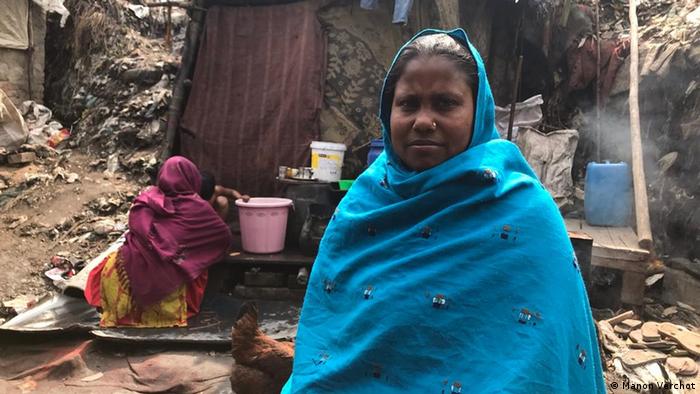
Latipha Bibi (pictured) earned their money in order to look at the dump next to their place of residence to the value of materials that you can sell more, but the garbage dump pollutes ground water
Nowhere in India, people trust the water coming out of the lines. The market research Institute Euromonitor, has calculated that the market for bottled water has grown from 2012 to 2017, to 184 percent.
The Indian government has promised to ensure that by 2022, every family in India has access to potable water, but many doubt that the promise can be met. But in the meantime, Start-up provide-ups and social enterprises, cheap Alternative to bottled water.
Water from the vending machine
In the last ten years have been built all over the country, thousands of water vending machines, where people pin for a little money of drinking water and your own container to fill. Some companies use the tank truck to the vending machines to replenish, others, such as the Start-up Swajal pumps water from the ground or rivers and to clean it.
“I come from a small village in Uttar Pradesh and water there is a Problem,” says Vibha Tripathi, Director of Swajal. Tripathi began to Worry for India’s water, after her 2-year-old Cousin died of diarrhea. In India, the third-leading cause of death is diarrhea cause in children.
Video 03:10 Parts
The fog catchers in Peru
Facebook Twitter google+ send Tumblr VZ Xing Newsvine Digg
Permalink https://p.dw.com/p/2j8Df
The fog catchers in Peru
Since the founding of Swajal 2014 Tripathi and her Team have set up about 400 water vending machines throughout the country. The company is engaged in the cities for more money for the water, to be able to it in return, in villages of more favorable offer, because the people there earn less. In cities of the Liter costs about a rupee, on the Land Swajal takes about half as much.
Tripathi said the government could not reach the hundreds of millions of people who have no reliable access to clean water. In Bhalswa, for example, provides the only water connection, only for 30 minutes with clean water, because the pipes are not maintained. And the port was built after him have called for members of the community for months.
The infrastructure will come, believe in Tripathi, but in the meantime, could companies like yours clean water in the communities, who otherwise would have none.
More: Four innovative technologies against the shortage of drinking water
Clean water is still out of reach
The government estimates the market for water and wastewater treatment in India, 420 million dollars and it grows quickly. Nevertheless, it can take many years for a company to get the cost of a water vending machine back in.
Water vending machines and other solutions, such as cheap water filters in the long term, cheaper than buying water in bottles. Nevertheless, the people who get their drinking water from a vending machine to pay more for the necessaries of life Good, as you would have if the public would be to supply clean and safe.

Some of the Indians use tap water only for Washing and even for that you cook it before
Even where Start-ups to fill the gap, you will reach not far from all the people living in India below the poverty line. By the end of this year, wants to Swajal install 1000 water vending machines all over the country, but Bhalswa is not provided.
The only way for the people there to continue to push for improvements. And even if people have heard of water vending machines, would you prefer it if the state would be active.
“We went 15 or 20 Times to our government representatives to demand a water connection clean water,” says Saira Banu, who lives in Bhalswa. Banu says that you boil water to wash. To Drink it is not suitable, but also after the boil and you will not be forced to buy drinking water.
More about: world, water scarcity Why wastewater is a possible solution could be
NGO staff Chaurasia said that the government had promised to build after 2019 for the people living in the vicinity of Bhalswa, a wastewater treatment plant. But in view of the upcoming elections this year, it is unclear whether the current government will still be in office, to carry out the project. The residents of Bhalswa look to continue into an uncertain future.
“The current representative of the local government say it will slowly happen, but when will it happen and how, we don’t know,” says Banu.
*DW has asked the Ministry of Water Resources, River Development & Ganga Rejuvenation, Central Ground Water Board and Delhi Pollution Control Committee on several occasions to an opinion, unfortunately without success.
